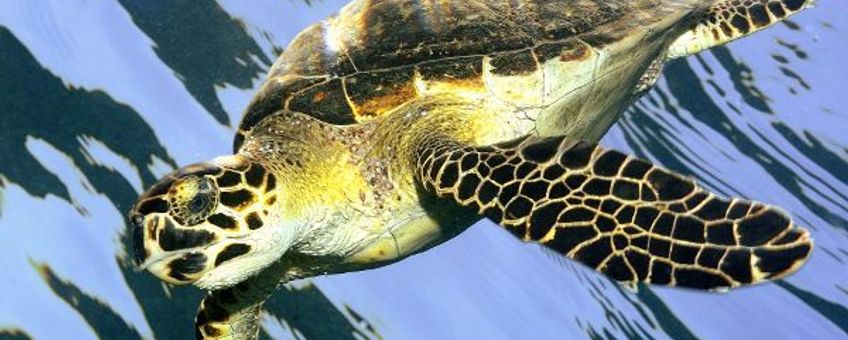
Nederland beschermt natuur van Northwest Curaçao
Bericht uitgegeven door Dutch Caribbean Nature Alliance (DCNA) [land] op [publicatiedatum]
De Nederlandse overheid heeft vier nieuwe draslanden (wetlands) van Internationaal belang aangewezen op het Nederlands Antilliaanse eiland Curaçao. Een van deze zogenaamde ‘Ramsar Sites’ is ‘Northwest Curaçao’. Dit 2.441 hectare omvattende deel van Curaçao bevat twee nationale parken: Shete Boka en Christoffel Natural Park. ‘Northwest Curaçao’ herbergt een grote variatie aan ecosystemen waaronder koraalriffen, lagunes met zeegrasbedden en mangroven, kalksteenterrassen en bos. De bedreigde lederschildpad en karetschildpad gebruiken de inlandse baaien om te nestelen en voedsel te zoeken, en een populatie van tenminste 500 Amerikaanse dwergsterns broedt er. In het koraalrif komen naast bedreigde koraalsoorten ook bedreigde vissoorten als de itajara* voor. Grondwaterreservoirs zorgen ervoor dat de lokale vegetatie jaar rond in stand blijft; vogels, vleermuizen en zoogdieren maken hier dankbaar gebruik van tijdens het droge seizoen.
Lees verder in het Engels......
The government of the Netherlands has designated four new coastal and near-coastal Wetlands of International Importance on the Netherlands Antilles island of Curaçao. One of the new so called ‘Ramsar Sites’ is Northwest Curaçao.

Northwest Curaçao
Northwest Curaçao is a natural area of 2,441 ha. The area comprises a great variety of ecosystems such as coral reefs, coastal lagoons with sea grass beds and mangroves, coastal limestone terraces, inland hills supporting evergreen woodland, freshwater dams, natural springs and dry deciduous shrublands. The Ramsar site includes parts of Shete Boka and Christoffel Natural Parks. The wetland covers approximately 20 km of the rocky, wave-exposed north coast of Curaçao, including 10 pocket beaches (bokas) and 3 inland bays that are used as nesting and foraging sites for threatened sea turtle species as leatherback turtle (Dermochelys coriacea; NL: lederschildpad) and hawksbill sea turtle (Eretmochely imbricata, NL: karetschildpad). There is also a breeding colony of more than 500 individuals of the Least Tern (NL: Amerikaanse dwergstern). Moreover, the northwestern coast of Curaçao locally harbours a fringing coral reef, characterized by more than 50% coral cover and the presence of such critically endangered coral species as elkhorn coral (Acropora palmata) and staghorn coral (Acropora cervicornisas) well as endangered fish species like the Goliath grouper (Epinephelus itajara, NL: itajara). Some of the caves in the area were used for spiritual rituals in the past, and Indian drawings can be found estimated to be more than 5,000 years old. Numerous manmade dams in the area retain freshwater for several months after the wet season has passed. Subterraneous groundwater reservoirs in turn sustain local vegetation types year-round which are used by several bird species, pollinating bats and mammals to survive during Curaçao’s dry season.
*De itajara is een straalvinnige vis uit de familie van zaagbaarzen (Serranidae)
Text: Nathaniel Miller, DCNA
Picture: Hans Leijnse
Nederlandse inleiding: Sara Mulder, De Natuurkalender
